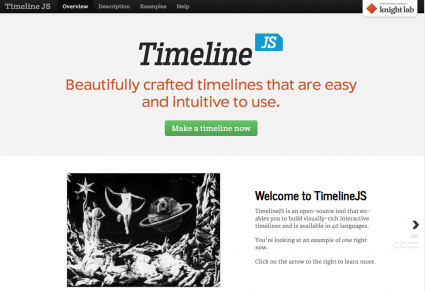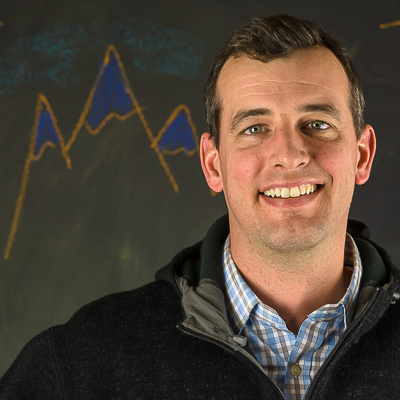When we pushed the final design and functionality of TimelineJS out to the world about 18 months ago, it was already a success for Knight Lab. It had been deployed at LeMonde, RadioLab, Gigaom and other big-name publishers. But in the year and half since, TimelineJS become a staple of the the web making world.
In fact, early this month the 250,000th instance of TimelineJS was created and deployed. At around the same time reader number 31 million scrolled through a TimelineJS instance in one of 48 supported languages.

Those big numbers are fun to talk about, and while we’d love to claim all credit, the truth is that TimelineJS owes much of its success to its open nature and the community that supports it.
Technologist Michael Vaughn, for example, loved the tool and created a Google form that allows people to build a timeline, but to bypass the standard TimelineJS Google Spreadsheet input.
Along the same lines, Ryan Pitts, formerly at the Spokane Spokesman Review, created a Django app that allows web producers at that publication to create a timeline without ever leaving their Django-based CMS. In turn, he’s open his work to allow other newsroom developers to add his app to their CMSs.
Another TimelineJS creation was inspired by a desire to use the tool’s interface for a completely new purpose and sent one web maker searching for a project. “I began to brainstorm some ideas that might work well,” Vincent Junior wrote in a blog post about his project. “I decided to hack something together using the Youtube API.”
Enter FanCanvas.com, which allows users to enter a Youtube username and “timelinify” the experience of browsing a YouTube user’s channel.
It’s a fun hack that gives users a new way to keep track of their favorite YouTube channels. It’s also far from what Zach Wise (TimelineJS’s principal builder) envisioned when building a timeline tool for journalists, but the open source nature of it made these types of projects possible.
Another unanticipated project came from Russian designer Martin Angelov who envisioned TimelineJS as a way to present a creative portfolio. He provides not only the CSS and HTML for a fresh looking version of TimelineJS, but a tutorial that walks designers through the changes he made and how to replicate them. (That particular look for TimelineJS was used in this tribute to a couple passing the 20-year mark in their relationship.)
All of these contributions come from skilled programmers and designers. But one of the great things about TimelineJS’ openness and ease of use is that it’s also drawn contributions from folks who are less technically savvy. These contributions come primarily in the form of building out TimelineJS’ catalogue of supported languages, but also in finding occasional hickups in the system, and improving documentation and training.

Thanks to user contributions TimelineJS is available in 48 languages, including those as novel to North Americans as Tamil, Tagalog, and Faroese, along with those we recognize readily — English, Chinese, Arabic, Spanish, French, German, and more.
Similarly, the open nature of TimelineJS helped inspire the folks at the Broadcasting Board of Governors Office of Design and Innovation to make a video tutorial for its cadre of international reporters at Voice of America and other outlets and inspired the folks at Sourcefabric to experiment with TimelineJS as a live-blogging platform.
All of this is a long way of saying that we owe much of TimelineJS’ success and subsequent innovation to the tool’s openness.
The tool surely wouldn’t have gotten to 250,000 instances and 31 million pageviews, without the contributions from the TimelineJS community — all the folks who use, teach, and build and innovate on top of our tool.
Thank you all for helping to make TimelineJS a success. And check in here for news on upcoming tools.
About the author
Tagged





